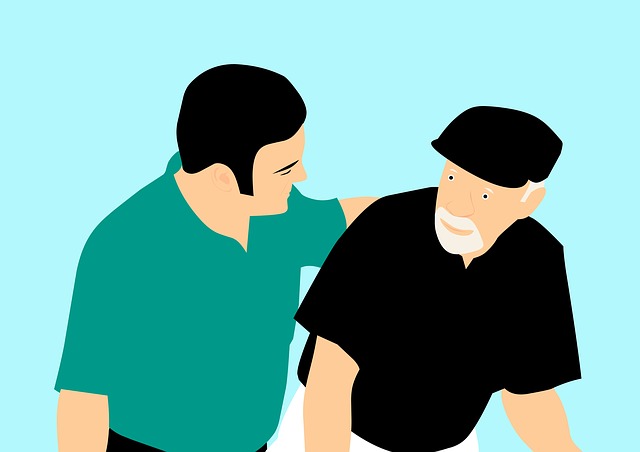Is your hospital or care facility losing its patients and thus your revenue is taking a hit? Alternatively, are you keen to find out just what automation can do for your facility in terms of retention as you forge a new care delivery solution for the future? You’re in the right place for answers. The one mistake that many hospitals and clinics conventionally make is to focus on acquisition and pay little attention to retention, the latter being key to ensuring a healthy cycle of revenue. If you’ve had to find out the hard way just why it’s important to improve patient retention, our article today will explain how automation, and remote patient monitoring services, in particular, can do this for your facility. Take a look.
Automated personalization shows concern and that you care
Patients are often telling their care providers what they want from them. However, they don’t also do so directly via words or actions but through their data. Misunderstanding the needs, wants and preferences of patients is where most facilities set a foot wrong and put off their patient base, thus incurring poor retention.
Fortunately, automation offers an easy fix to improve patient retention through customization to meet patient needs at an individual level. This analytical approach anticipates what the patient will require and thus formulates engagement accordingly to match these needs. For example, Techindia’s CRM allows for the convenient management of patient data, aiding with the personalization of:
- Alerts
- Schedules
- Reports, etc.
Just to emphasize its impact, new research by Mercury Healthcare finds that patient retention improves by 35% or more when patient interactions are more personalized or targeted.
Automated and interactive follow-up enhances engagement
How do you attract and retain patients? By keeping in touch and communicating with them regularly. When communication is infrequent, patients feel disconnected from the care process. And once that happens, your patients may start to weigh out their options and switch to a healthcare provider that “gets them.”
Beyond regularity, long response times to patient queries can also be what does in the patient-physician relationship, sending patients on the hunt for new facilities or doctors.
Through automation and the audio-visual communication features that remote patient monitoring services provide; your care facility can ensure this connection never falters but instead grows and blooms. Frequent follow-up becomes possible, and thus patients will inevitably feel more informed and valued. Besides regularity, swiftness of response also goes up which is also key to keeping patients content with your care delivery.
Moreover, your bottom line also stands to benefit immensely. Research has shown that hospitals can triple revenue when they communicate with their patients at least 10 times annually.
It affords modern conveniences that keep patients loyal
Good patient retention equals more repeat business. But how can patient retention be improved through automation? Well, another way is through online conveniences such as:
- Remote scheduling
- Virtual visits
- Reminders/alerts and more
If you’re not quite sold on the gravity or significance of such services to patients, you should know that about 8 in 10 patients recently surveyed prefer scheduling a medical appointment remotely or online.
Therefore, consider remote patient monitoring solutions if you’d like to appeal to the needs of 80% of your leads. Online scheduling for one helps your facility get around patients’ challenges such as a hectic work routine which may lead them to switch to a more convenient option otherwise.
Attrition declines with improved care service delivery quality
The caliber of service experience also has a huge say on retention, with close to 90% of individuals attesting that a poor service experience can make them cut all ties with a healthcare provider.
Automation however can aid to counteract this and improve the quality of healthcare service delivery in several ways. For one, remote patient monitoring solutions can take over administrative tasks that typically impede service delivery such as drudge work like reports and data analytics. The result is more time with patients, and thus a better understanding of their needs.
Additionally, with the scheduling features of healthcare automation, scheduling conflicts are avoided while patient waiting time lowers as well. Both outcomes directly impact the quality of service that patients receive, which in turn determines their level of loyalty toward the facility in question.
Delving deeper into scheduling appointments, automation further reduces the case of cancellations and no-shows. These can be red flags for attrition as 7 in 10 individuals who miss a medical appointment typically never go back to the same care provider.
Health outcomes improve and so does patient satisfaction
Patient dissatisfaction is the primary reason that care facilities are seeing their clients head for the door. Several things are to blame, chief among them being poor or undesirable health outcomes, which often lead to:
- Readmissions
- High patient mortality
- Reduced quality of life for the patient
It’s unlikely that care facilities with low diagnostic yield will hang onto their patients for the long haul, thus it is necessary to guarantee positive health outcomes. Automation and remote patient monitoring are one way to raise diagnostic accuracy and thus increase the probability of desired health outcomes.
For example, Techindia’s RPM solutions offer a world of advantages in this regard. It can, for one, improve medication adherence through round-the-clock monitoring and data collection. What’s more, it affords the optimization of treatment according to fluctuating patient vitals, overall ensuring more positive results for patients. With improved diagnostic yield, care facilities maintain care continuum and patients persistently reap value, thus encouraging loyalty.
Conclusion
Patients are the most important aspect of the care equation. If your facility holds this view, then you’d do well to consider implementing a patient retention strategy, preferably one that has automation at the heart of it. With a good strategy, you can nurture more positive, long-term relationships, and thus create a trust-fueled connection that keeps on providing value for both parties. We’ve discussed how automation can improve patient retention, it’s now time to act. Visit the Techindia website for remote patient monitoring services that will elevate your facility’s patient retention levels.







